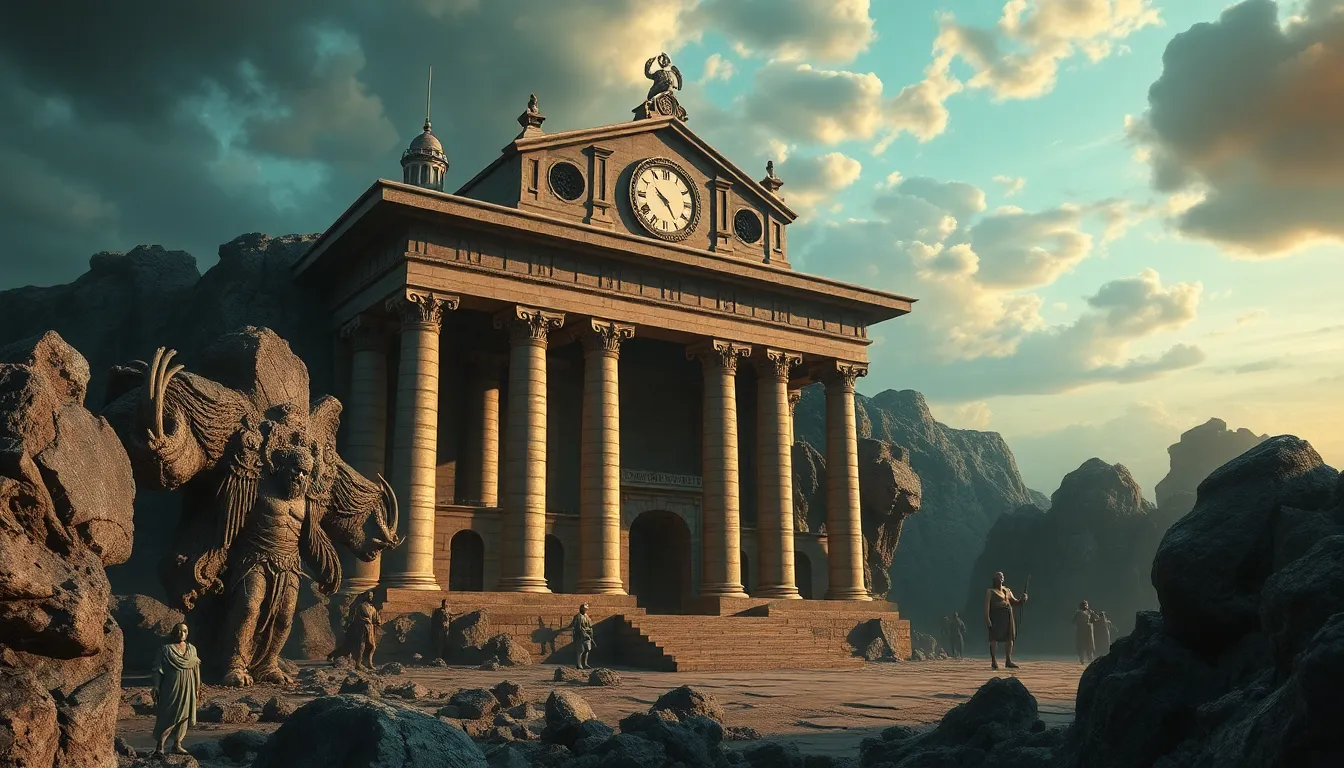Tartarus: The Ultimate Mythical Prison for the Wicked
I. Introduction
Tartarus, in the realm of Greek mythology, is often defined as a deep abyss that is used as a dungeon of torment and suffering for the wicked. It is not merely a place of punishment; it holds a significant role in the moral and philosophical discourse of ancient Greek culture.
This article aims to explore the origins, descriptions, inhabitants, and the consequences of being imprisoned in Tartarus. It will also discuss its modern interpretations and its comparisons to other mythical prisons, ultimately reflecting on its enduring legacy in the context of justice and morality.
II. Historical Context of Tartarus
The concept of Tartarus originates in ancient Greek literature, where it is portrayed as a primordial entity and a location. It is first mentioned in the works of Hesiod, particularly in “Theogony,” where it is described as a pit beneath the earth, even deeper than Hades.
Homer also references Tartarus in “The Iliad,” describing it as a dark and dreadful place where the Titans were imprisoned after their defeat by the Olympians. This highlights the early perception of Tartarus as a place of punishment for the most severe transgressions against the gods.
Over time, the concept of Tartarus evolved through various mythological texts, becoming associated with the idea of eternal punishment and the consequences of one’s actions in life. It serves as a stark warning about the repercussions of hubris and immorality.
III. The Geographical and Mythical Description of Tartarus
Tartarus is situated deep within the Greek mythological cosmos, often depicted as lying far below the earth, beneath even Hades, which is the realm of the dead. While Hades is a place for the souls of the deceased, Tartarus functions as a celestial prison for the most heinous criminals.
In comparison to the Underworld, Tartarus is characterized by its extreme desolation and darkness. It is often described as a place of agony and despair, with no hope of redemption for its inhabitants. The physical characteristics of Tartarus reflect its role as a symbol of divine retribution and the consequences of unchecked ambition and moral failing.
IV. The Inhabitants of Tartarus
Many notable figures are said to reside in Tartarus, bound by the chains of their own sins. Among these are:
- Titans: The original gods who were overthrown by Zeus and his siblings, such as Cronus and Atlas, are imprisoned here as punishment for their rebellion.
- Sinners: Mortals who committed egregious crimes, such as murder, betrayal, and impiety, are also condemned to Tartarus. Their transgressions often lead to eternal suffering.
The role of divine judgment is crucial in determining who is imprisoned in Tartarus. The gods, acting as arbiters of justice, decide the fate of souls based on their actions during life. The concept of eternal punishment in Tartarus serves as a moral lesson, warning against the consequences of immoral behavior.
V. The Punishments and Torments of Tartarus
The punishments inflicted on the souls in Tartarus are varied and often creative, reflecting the moral failings of the damned. Some of the most notable examples include:
- Sisyphus: Condemned to roll a boulder up a hill, only for it to roll back down every time he nears the top, symbolizing the futility of his deceitful life.
- Tantalus: Forced to stand in a pool of water beneath a fruit tree, perpetually hungry and thirsty as the food and drink elude his grasp, representing insatiable desire.
- Ixion: Bound to a fiery wheel that spins eternally, illustrating the punishment for his hubris in attempting to seduce Hera.
These myths illustrate not only the nature of the punishments but also the underlying moral implications of these tales in Greek culture. They serve as cautionary stories that emphasize the importance of virtue and the dire consequences of moral transgressions.
VI. Tartarus in Modern Interpretations
In contemporary literature and popular culture, Tartarus has made a significant impact, often being referenced in various forms of storytelling, from novels to films. Its depiction continues to evolve, reflecting modern societal values and concerns.
Modern adaptations often highlight the themes of justice and retribution, drawing parallels between Tartarus and contemporary discussions about morality and ethics. The idea of a place where the wicked receive their just deserts resonates with audiences, prompting reflections on justice systems in our own society.
Additionally, Tartarus is sometimes portrayed in more ambiguous ways, inviting discussions about redemption and the potential for change, contrasting with its traditional depiction as a place of eternal torment.
VII. Comparison with Other Mythical Prisons
When comparing Tartarus to other mythical prisons, several key differences and similarities emerge:
- Tartarus vs. Norse Hel: While Tartarus is a place of punishment for the wicked, Hel in Norse mythology serves as a realm for all who die, with varying conditions of existence rather than a strict punishment.
- Tartarus vs. Christian Hell: Both serve as places of punishment, but Christian Hell is often depicted with a focus on eternal damnation for unbelievers, while Tartarus emphasizes the consequences of specific moral failings.
These comparisons highlight common themes of punishment and morality, as well as differences in concepts of redemption and justice across cultures. Understanding these differences helps illuminate how societies view morality and the consequences of one’s actions.
VIII. Conclusion
In conclusion, Tartarus occupies a significant place in Greek mythology as the ultimate prison for the wicked. Its importance lies not only in its role as a place of eternal punishment but also in its moral implications and cultural impact throughout history.
Reflecting on the lessons of Tartarus can provide valuable insights for contemporary society, encouraging individuals to consider the consequences of their actions and the moral dimensions of their choices. The enduring legacy of Tartarus as a symbol of justice and retribution serves as a reminder of the timeless struggle between good and evil.




